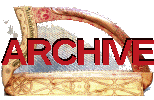

|
There are a number of instruments dated to the late 18th and early 19th centuries. By this late date the Gaelic harp tradition was in severe decline; the Belfast harpers' meeting of 1792 attracted only a handful of mostly elderly men, and within a decade the tradition was reduced to charitable schools for blind boys. These harps shown here do not share many of the features common in the earlier Gaelic harps, instead being based largely on European pedal harp technology. Most notably this means the soundbox is built from thin planks with a cross-grain softwood soundboard, is deeper at the treble than the bass and has a sloping bottom to provide a stand for the harp. They are included as “Gaelic harps” only because they were intended to be a part of the tradition, and they do still make use of metal strings instead of the pedal harp's gut.
Also known as Hempson harp
Early 19th century?
This harp is styled after a pedal harp, with cylindrical pillar. The Hempson attribution is obviously spurious
 Made by Goudy of Belfast, early 19th century
Made by Goudy of Belfast, early 19th century
This instrument is preserved in Collins Barracks, Dublin. It is said to have belonged to Valentine Rainey, Master of the Belfast Harp Society School (1823 - 1827), and to have been made by Goudy, Belfast. It seems based on the design of the Egan/Hewson Society harps (see below) using a spare pedal harp body, but in this case the pedal box has also been retained! It bears tuning pins and bridge pins but no strings.
Simon Chadwick